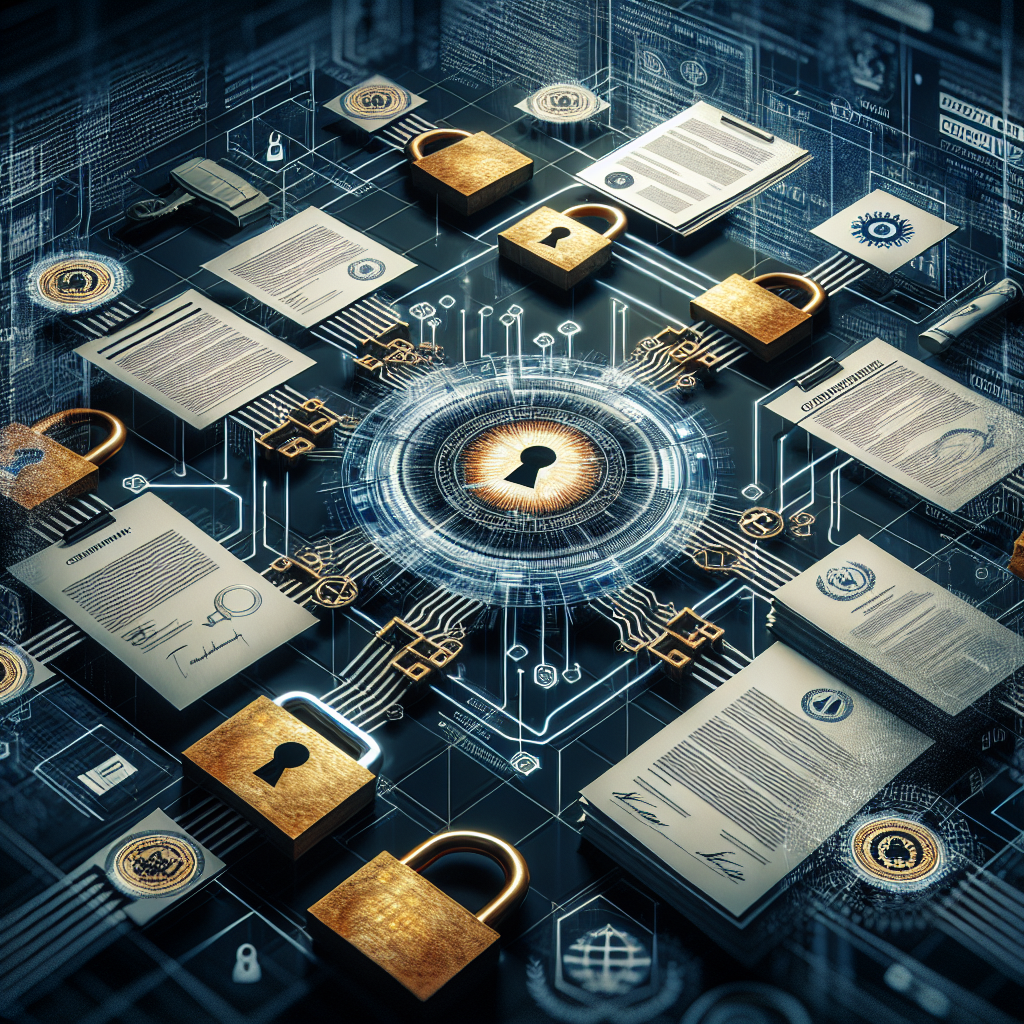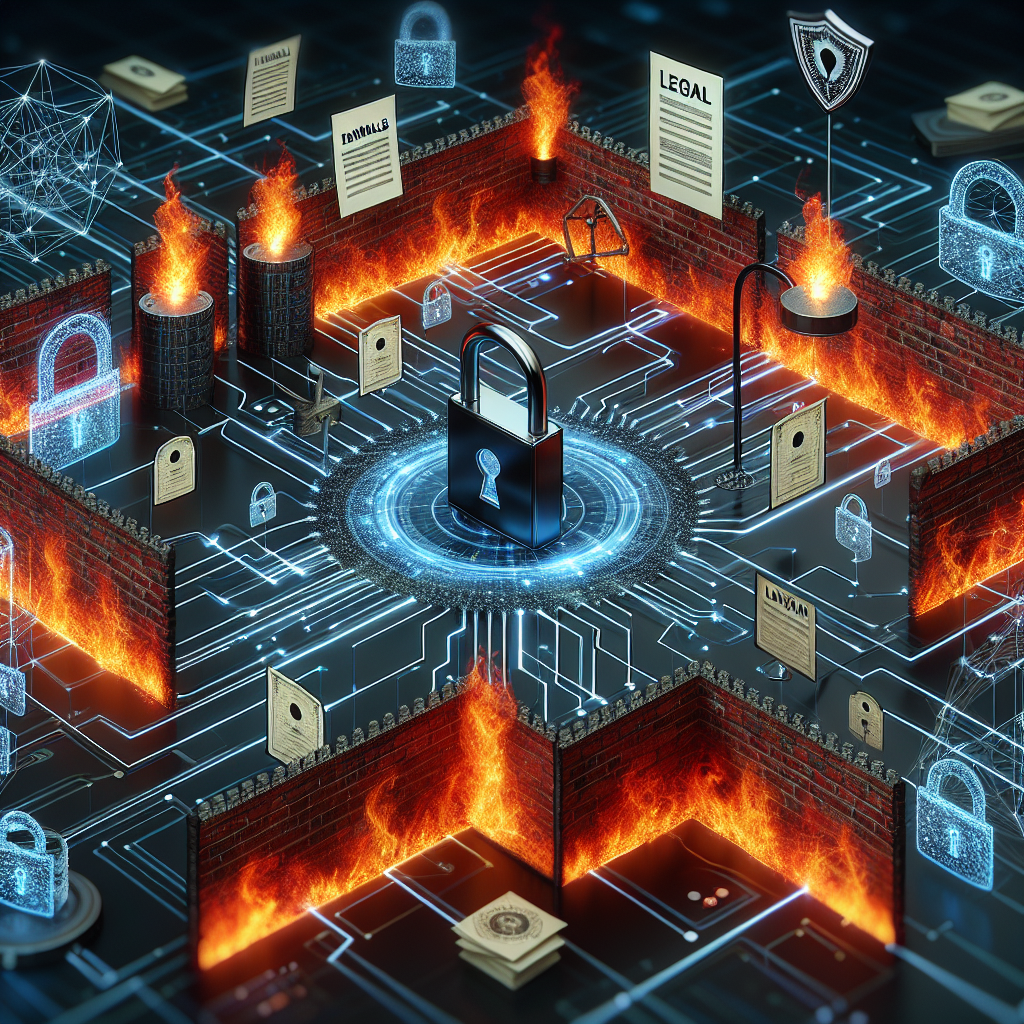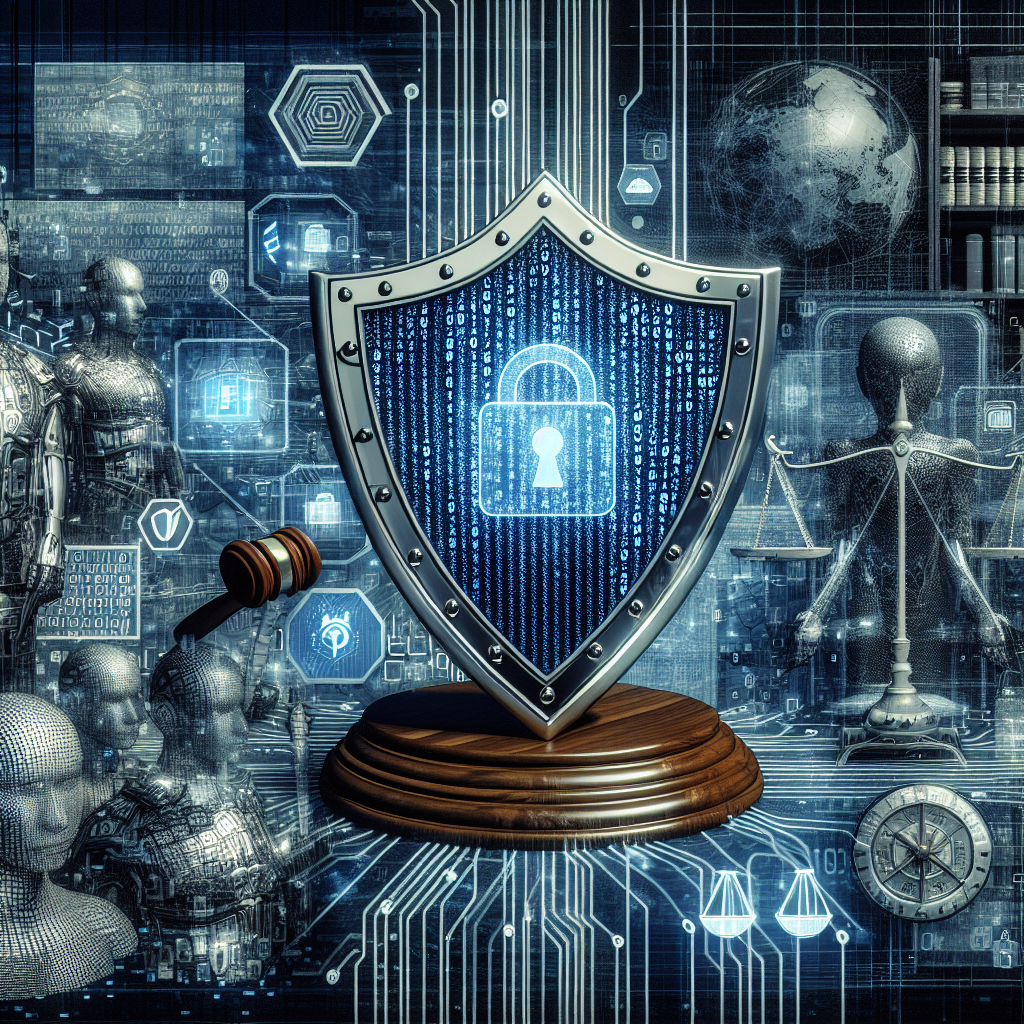
At the heart of safeguarding digital operations for small to medium-sized businesses (SMBs) lies the crucial intersection of cybersecurity and compliance integration. Understanding this nexus is the first step towards building a fortress around your company’s sensitive data and systems. In an era where threats are increasingly sophisticated, the alignment of cybersecurity measures with regulatory standards is not just advisable; it’s imperative for the survival and resilience of your business.
For SMBs, this integration starts with recognizing that cybersecurity is not just about installing firewalls or antivirus software; it’s about creating a comprehensive strategy that includes risk assessments, employee training, and incident response plans. Compliance, on the other hand, ensures that these strategies meet the specific regulations that govern your industry, whether it’s HIPAA for healthcare or GDPR for businesses operating in the EU.
By intertwining these two components, businesses can not only protect themselves from cyberattacks but also avoid hefty fines and reputational damage that come with non-compliance. It’s about adopting a proactive stance—identifying potential vulnerabilities before they can be exploited and ensuring that all protective measures are up to date with the latest regulatory requirements.
Contact us to get more information on how SecureNet Solutions can facilitate this integration for your business, providing the expertise required to navigate the complexities of both cybersecurity and compliance, ensuring your operations are secure and up to standard.
The Strategic Importance of Integrated Cybersecurity Measures

As businesses become increasingly reliant on technology, the strategic importance of integrated cybersecurity measures becomes undeniable. An integrated approach ensures that cybersecurity practices are not only implemented but are also aligned with the business objectives and regulatory requirements. This harmonization is vital for the creation of a resilient infrastructure that can adapt to the evolving threat landscape and the changing demands of legal compliance.
Integrated cybersecurity measures go beyond mere defense mechanisms. They enable businesses to operate with confidence, knowing their assets are protected, and their operations are in line with industry standards. A robust cybersecurity strategy that is well integrated with compliance frameworks can also serve as a competitive advantage, showcasing to customers and partners that the business is trustworthy and diligent in its digital practices.
Moreover, the strategic integration of cybersecurity and compliance can lead to cost savings by avoiding redundant processes and ensuring that resources are allocated efficiently. Instead of treating cybersecurity as an isolated IT issue, integrating it with compliance allows for a unified governance model, where security decisions are made with a clear understanding of regulatory impacts and business goals.
Ultimately, an integrated cybersecurity approach not only protects a business from cyber threats but also strengthens its market position by building trust and ensuring continuous compliance with legal and regulatory standards.
Navigating Regulatory Frameworks in Cybersecurity Integration

Navigating the complex labyrinth of regulatory frameworks is a crucial aspect of cybersecurity integration. Small to medium-sized businesses (SMBs) must understand the specific laws and regulations that apply to their industries to ensure full compliance and avoid costly penalties. Regulatory frameworks like the General Data Protection Regulation (GDPR), the Health Insurance Portability and Accountability Act (HIPAA), and the Payment Card Industry Data Security Standard (PCI DSS) provide guidelines that must be meticulously followed.
Adherence to these frameworks necessitates a comprehensive assessment of the company’s current cybersecurity posture. This includes identifying any gaps between existing security measures and the requirements set forth by governing bodies. For effective cybersecurity and compliance integration, organizations should conduct regular audits and assessments to ensure ongoing compliance and to adapt to any amendments in regulatory laws.
Understanding these frameworks also involves recognizing the penalties associated with non-compliance, which can range from hefty fines to reputational damage. To navigate this, businesses must invest in ongoing education and training for their employees, as human error is often a significant vulnerability in cybersecurity.
By staying informed and prepared for the intricacies of regulatory frameworks, businesses can create a cybersecurity strategy that not only protects against digital threats but also aligns with legal and ethical standards. This proactive stance is essential for maintaining customer trust and avoiding disruptions to business operations.
Best Practices for Implementing Compliance-Driven Security

Implementing compliance-driven security involves a strategic alignment of cybersecurity measures with regulatory requirements, ensuring that businesses not only protect their digital assets but also adhere to industry standards. Best practices in this domain start with the establishment of a strong security policy that reflects the organization’s commitment to compliance and cybersecurity.
To build a robust security framework, businesses should prioritize the following steps:
- Conduct comprehensive risk assessments to identify and analyze potential vulnerabilities within the system.
- Develop and maintain an inventory of all digital assets, including hardware, software, and data, to manage and protect them effectively.
- Implement security controls tailored to the specific needs of the business, ensuring that they meet or exceed regulatory standards.
- Regularly update and patch systems to protect against known vulnerabilities and emerging threats.
- Invest in cybersecurity awareness and training programs for all employees, fostering a culture of security and compliance throughout the organization.
- Establish incident response plans and regular drills to prepare for potential breaches, thus minimizing the impact on operations and compliance.
By following these best practices, businesses can create a compliance-driven security framework that not only defends against cyber threats but also instills confidence among stakeholders that regulatory obligations are being met. This holistic approach to cybersecurity and compliance integration serves as a foundation for a resilient and trusted business environment.
Evaluating Cybersecurity Solutions for Compliance Assurance

When ensuring that cybersecurity solutions align with compliance requirements, businesses must carry out a rigorous evaluation process. This involves assessing the effectiveness of security tools and practices in meeting the regulatory standards specific to their industry. Compliance assurance is not a one-size-fits-all proposition, and careful consideration must be given to the unique challenges and risks each organization faces.
The evaluation process should include:
- Reviewing the solution’s capabilities in providing comprehensive coverage against a wide range of threats.
- Verifying that the security solution can be seamlessly integrated with existing systems without disrupting business operations.
- Ensuring the solution offers flexibility to adapt to changing compliance requirements and threat landscapes.
- Assessing the vendor’s reputation and the support provided for implementation, maintenance, and updates of the security system.
- Looking for solutions that not only protect data but also provide clear reporting and audit trails for compliance verification.
It’s imperative that decision-makers seek out solutions that offer scalability, so the business can grow without outpacing its security infrastructure. Additionally, solutions should be assessed for their ability to provide real-time monitoring and alerts, which are crucial for immediate response to security incidents, thereby maintaining continuous compliance.
Ultimately, the right cybersecurity solutions for compliance assurance are those that provide a multi-layered security approach, align with the organization’s risk profile, and offer the assurance that compliance standards are consistently being met. This strategic evaluation helps businesses protect their reputation, avoid penalties, and build trust with clients who are assured of their data’s security and the business’s regulatory adherence.
Fostering a Culture of Security and Compliance Awareness
For cybersecurity and compliance integration to be effective, it is essential to foster a culture of security and compliance awareness within the organization. This cultural shift requires regular training and education for all employees, emphasizing the importance of their role in maintaining the company’s digital security posture. Management must lead by example, demonstrating a commitment to upholding security protocols and compliance regulations in their daily operations.
Key elements for fostering this culture include:
- Implementing ongoing training programs that address current cybersecurity threats and compliance obligations.
- Encouraging open communication about security concerns and potential improvements.
- Rewarding compliance and security best practices among staff to reinforce positive behavior.
- Utilizing clear, concise policies that outline expected behaviors and the implications of non-compliance.
- Engaging employees in regular discussions and updates on the evolving cybersecurity landscape.
By ingraining security and compliance awareness into the corporate ethos, businesses not only enhance their defensive capabilities but also empower their workforce to act as the first line of defense against cyber threats. This proactive stance on security is a critical component in safeguarding the integrity of an organization’s data and systems.
If you’re seeking to elevate your company’s cybersecurity stance and ensure compliance with industry regulations, Contact us to get more information. Our team at SecureNet Solutions is dedicated to assisting businesses in developing and maintaining a robust security culture that aligns with compliance standards, offering peace of mind in an ever-changing digital world.
